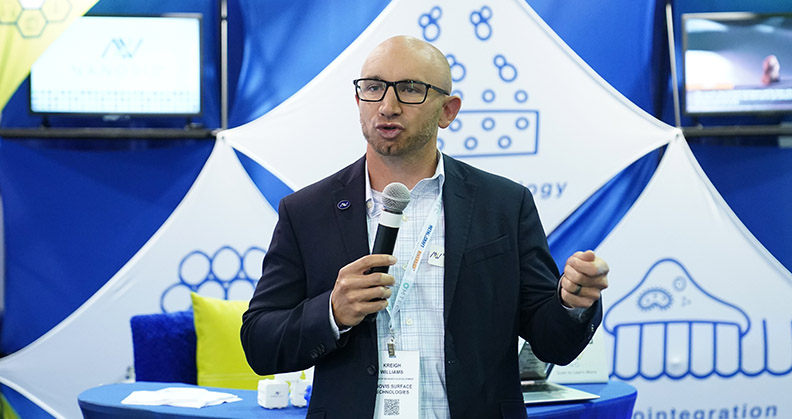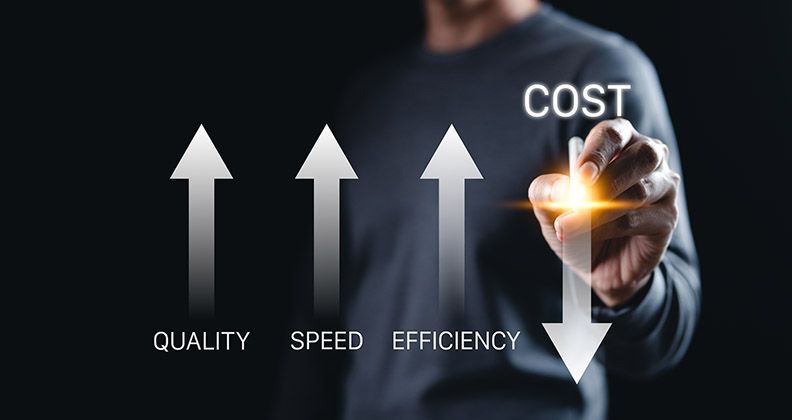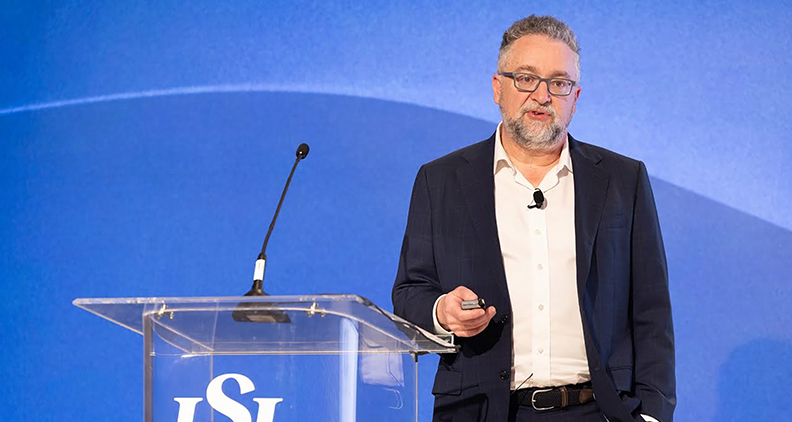
When Maxx Orthopedics committed to bringing a next-generation cementless tibial baseplate to market, it wasn’t just aiming to build a new product. The company was betting on additive manufacturing (AM) as the key to solving design and performance limitations.
But pushing the boundaries of orthopedic implant design comes with its own set of challenges, particularly when dealing with lattice structures, FDA validation and supply chain bottlenecks. To meet those challenges, Maxx turned to a familiar partner.
But not at first. Maxx started the project with another contract manufacturer, which unfortunately showed a lack of device design acumen and regulatory expertise during key development phases.
“We actually had to pull our first FDA submission,” said Corey Perine, COO of Maxx. “That’s when Orchid stepped in. The timing was right.”
Orchid had just made a major investment in electron beam melting (EBM) printing technology, including proprietary software that allows for the creation of unique lattice structures across all implant sizes.
“We had the right technology, a better cost structure and most importantly, the trust we’d built with Maxx over the years,” said Netaji Khot, Global Commercial Manager at Orchid. “That’s what helped them make the decision to move forward with us.”
Maxx gained FDA 510(k) clearance of the Porous Tibial Baseplate for the Freedom Total Knee System in February. It was the culmination of years of hard work that led to faster iteration and the creation of advanced design features that are only possible with AM — and strategic partners that understand the essential elements of a productive collaboration.
Shared Commitment. Maxx’s relationship with Orchid began in 2010, and a lot of trust developed between the two companies over the years. “When they reached a point where their existing supplier was struggling, it was a natural fit for us to step in,” Khot said.
The collaboration worked between the two companies because of a shared mindset. “We’d worked with Orchid before, going back to our earliest days,” Perine said. “They were one of the suppliers that helped us get started, and that meant something to us.”
That level of commitment and familiarity kept the lines of communication open and gave Maxx confidence that they wouldn’t be sidelined in favor of larger clients as the project progressed.
“In the past, we’ve been deprioritized by suppliers chasing bigger contracts,” Perine said. “But with Orchid, we know we’re not going to outgrow them, and they’re not going to stop working with us.”
Innovation Over Speed. While AM can accelerate time to market, Perine said that wasn’t his priority.
“Speed is important, but what mattered more to us was the ability to refine the baseplate’s design, particularly the porous structure, in ways you just can’t do with traditional manufacturing methods,” he said.
It’s important to find a contract manufacturer with engineering prowess. Maxx presented an initial design and Orchid proposed tweaks based on their own experience. “It was a true collaboration,” Perine said. “The final design was better because we let both teams contribute throughout the process.”
Advanced Capabilities. Maxx’s goal wasn’t just to create another tibial baseplate. AM enabled its team to design a device that minimizes bone loss and offers more anatomical flexibility.
It’s important for OEMs to understand what capabilities they seek in a partner. Orchid’s AM-based lattice structure was engineered to resemble the mechanical properties, strength and pore size of bead-sintered coating.
At a time when much of the orthopedic industry was gravitating toward laser-based 3D printing, Orchid went in a different direction that aligned with the needs of its customer base. The company worked closely with GE Additive to increase its EBM capabilities, which is ideally suited for efficiently producing large joint components.
“We can stack up to 889 layers in a single build, producing between 200 and 350 parts at a time, depending on size,” Khot said. “That kind of scale, combined with quality consistency, is what makes us competitive.”
Recognizing that OEMs often struggle with post-processing, Orchid invested in building a full AM ecosystem, from printing to final finishing.
“A lot of OEMs have the printers, but they don’t have the expertise to finish large joint implants,” Khot said. “We’ve built out the entire supply chain. When Maxx places an order, they receive a fully finished device, not just a printed part.”
Orchid recently delivered a batch of finished tibial baseplates to Maxx in just seven weeks. That’s a significant improvement over traditional methods, which can take 25 to 30 weeks to complete when factoring in forging, machining and coating.
Orchid’s bold investment in EBM was important to Maxx. “A lot of suppliers dip their toe in,” Perine said.
“Orchid dove in headfirst. That told us they’re not just experimenting, that they’re committed to this technology and they’re planning to scale with it.”
Regulatory Expertise. One of the biggest hurdles in launching a new additively manufactured implant is navigating FDA’s requirements. Finding a contract manufacturer with experience and infrastructure was important to Maxx.
Post-processing cleaning is a critical issue with lattice-based implants. Residual powder trapped inside the porous structure can compromise performance and safety. “We have in-house cleaning equipment to ensure that every part is completely free of powder,” Khot said. “And we validated the cleaning process with FDA-prescribed testing.”
The Orchid team has a deep understanding of EBM and the related regulatory landscape. They joined the Maxx team on calls with FDA, explained the cleaning validation process and helped ensure the project met the required mechanical properties.
“They were transparent about what they knew, what they didn’t and what was still in the gray area,” Perine said. “And we operated largely in that gray area to figure things out together.”
Having a partner with knowledge that extended beyond the minimum regulatory requirements was particularly valuable.
“FDA was learning, too. There aren’t that many devices that have gone through this process,” Perine said. “We had to figure out the best way how to communicate our technology to them, and Orchid helped us shape that narrative.”
Taking Action. Throughout the baseplate development process, Perine’s leadership style stood out to the Orchid team. His responsiveness and ability to keep the project moving were noticed and appreciated. He remained highly involved, joining weekly calls, made quick decisions and provided immediate feedback.
“If something didn’t meet their expectations, he said it on the spot,” Khot said. “His decisiveness let us move forward faster.”
For their part, the Orchid team was always available in between the project’s scheduled milestones meetings. They made themselves accessible at every level for ad hoc check-ins or spontaneous problem-solving.
“That kind of availability reflects a deeper commitment,” Perine said. “Everyone on both sides was truly engaged throughout the process.”
The collaborative energy helped keep the project on track, even when the teams faced delays from external test labs. In response, Orchid began sourcing multiple lab partners to avoid future setbacks.
“The focus on constantly moving forward helped expedite the solution to what was our biggest bottleneck at that point,” Khot said.
Persistent Adaptability. When asked what Maxx took away from this collaboration that will guide future projects, Perine didn’t point to a technical insight or a design feature. The lesson was simple: You can figure things out.
“When you’re in the middle of a project, especially after one that didn’t go well, there are moments where you think, ‘What if this blows up, too?’” he said. “But we got through it. We navigated the regulatory process, built a better product and emerged stronger.”
That confidence will serve Maxx well as it pursues new implants, processes and partnerships. “We know we can keep pushing boundaries, trying new things and solving problems as they come,” Perine said.
That agile mindset is deeply rooted in Maxx’s entrepreneurial spirit.
“We started the company from scratch, and we’ve grown by making informed, fast decisions and accepting that some will fail. But that’s how you learn and innovate faster,” Perine said. “If you want 100% certainty, this isn’t the business for you. Aim for 90% confidence and then test the rest. If you try to eliminate every possible risk before making a move, you’ll never move forward.”
More to Come
Following the successful launch of the Freedom Total Knee’s tibial baseplate, Maxx is now working with Orchid on two more additive projects. For Orchid, the baseplate’s success has reinforced its strategy of focusing on producing large joint implants with EBM technology.
“Many of our OEM customers, especially those that have invested in printing technology, have run into the same challenge: We’ve printed the parts, now how do we finish them?” Khot said. “That’s where we’ve been able to unlock real value. We’ve developed an end-to-end supply chain solution. For companies like Maxx, we can deliver a fully finished device, eliminating the need for them to manage any part of the process.”
Maxx’s collaboration with Orchid shows how AM, design expertise and transparent collaboration can accelerate innovation in orthopedics. It’s a prime example of how great things happen when contract manufacturers partner with OEMs to rethink what’s possible.
DC
Dan Cook is a Senior Editor at ORTHOWORLD. He develops content focused on important industry trends, top thought leaders and innovative technologies.




